Big-Cat Safari Adventures Waiting In Every U.S. State
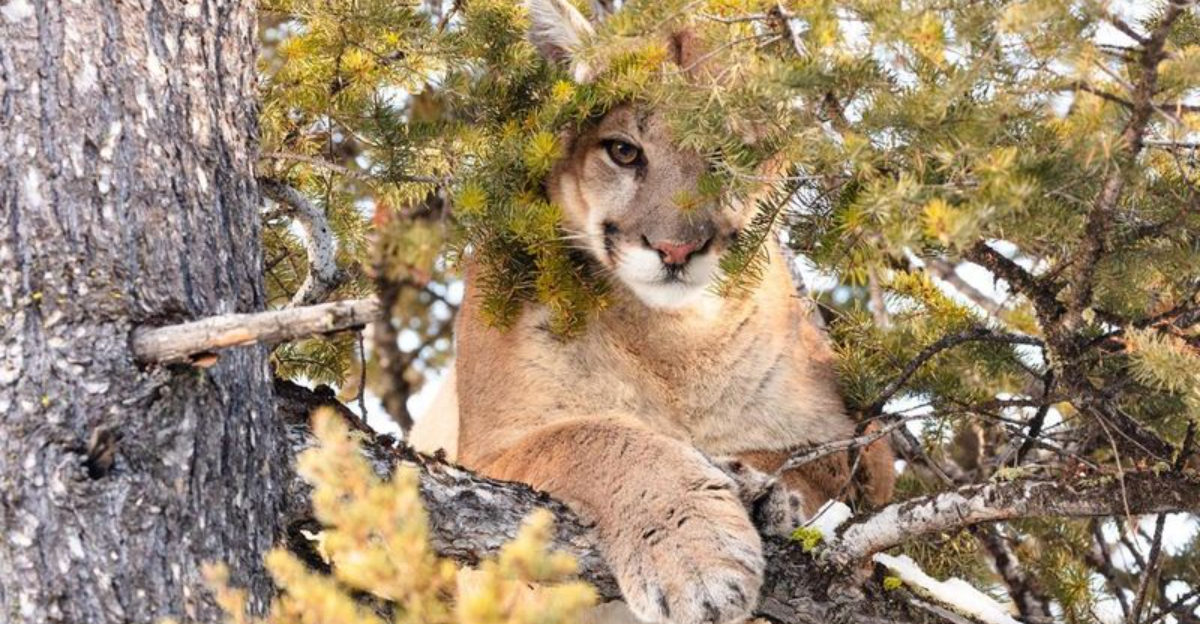
Trade zoo fences for wild forests and step into the world of America’s most elusive predators. From quiet swamps in the South to alpine ridges out West, bobcats, mountain lions, and even lynx still roam free—if you know where to look. This isn’t just a guide—it’s a call to adventure.
We’re taking you on a journey through every state, highlighting the best places to spot these incredible animals in their natural habitats. With tips on where to go, what to watch for, and how to observe respectfully, you’ll be ready to experience the quiet thrill of a true big-cat encounter. Nature doesn’t get more real than this.
1. Alabama – Bankhead National Forest
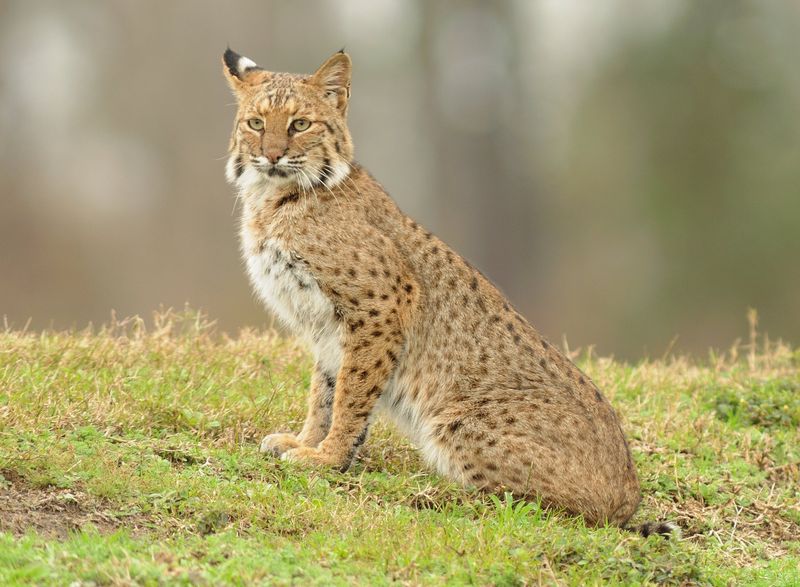
The whispers of leaves underfoot signal an adventure. Bankhead National Forest offers a rich habitat for bobcats, with its dense woods and serene waters. Visitors often find the early morning or late afternoon best for sightings, as these elusive cats prefer the cool of dawn and dusk.
Walking quietly along the trails, one might spot tracks or hear the distant call of a bobcat. It’s essential to move slowly and respect their space, ensuring a safe and enriching experience for both humans and wildlife. Encountering a bobcat here is like finding a hidden gem in Alabama’s wilderness.
2. Alaska – Kenai National Wildlife Refuge
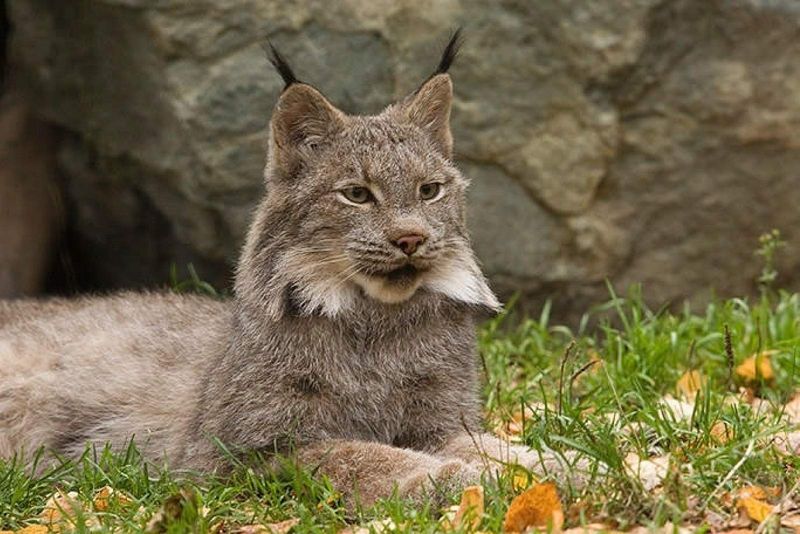
This Alaskan wilderness provides ideal conditions for the cats, with its sprawling terrain and diverse ecosystem. The best chances to witness lynx and bobcats creatures are during winter, when tracks are more visible against the snow.
Patience is key; these cats are masters of camouflage. It’s a wild symphony of nature, where respect for the inhabitants enhances the thrill of the chase. Observing quietly, visitors may glimpse these elusive predators against the stunning backdrop of Alaska.
3. Arizona – Coronado National Forest
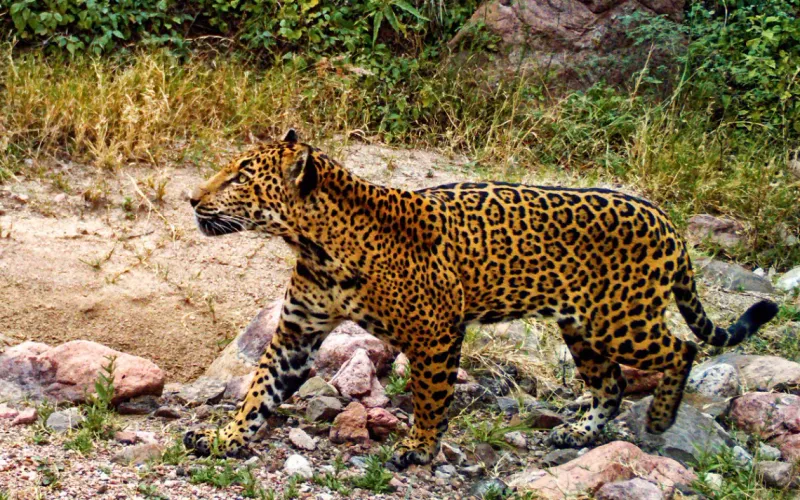
In the heart of the desert a unique habitat near the southern U.S. border offers an unparalleled opportunity to observe mountain lions, bobcats, and the rare jaguar.
Opt for early morning or late evening hikes to increase the odds of a sighting. While exploring the Coronado National Forest, remain vigilant and respect the territory of these magnificent felines. Their elusive nature makes each encounter a story worth sharing, as visitors experience the raw beauty of Arizona’s wilderness.
4. Arkansas – Ouachita National Forest
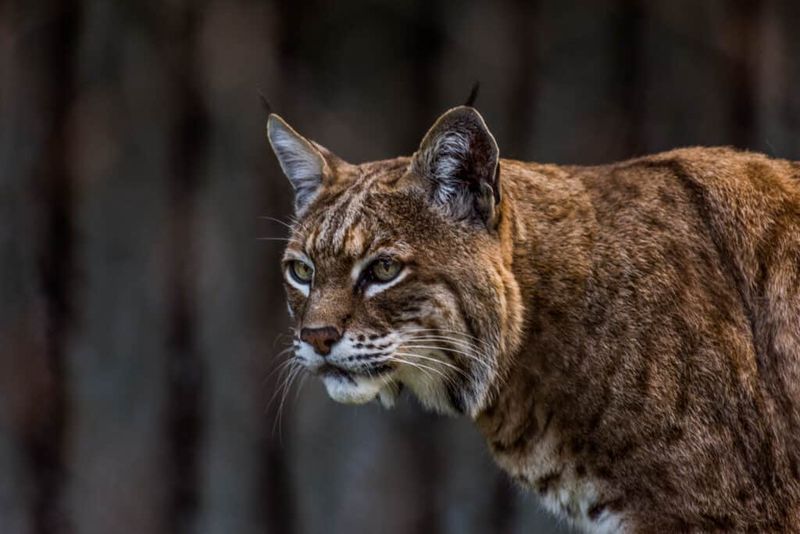
Among the pines and hidden trails there’s an expansive Arkansas forest that provides an escape into nature where bobcats roam freely.
Hikers in Ouachita National Forest may find paw prints or hear distant calls, but remember, these cats are masters of stealth. Opt for quieter trails to increase the chance of a rare encounter. Respect and patience are vital, making each sighting a cherished memory in the tranquil embrace of the forest.
5. California – Santa Monica Mountains National Recreation Area
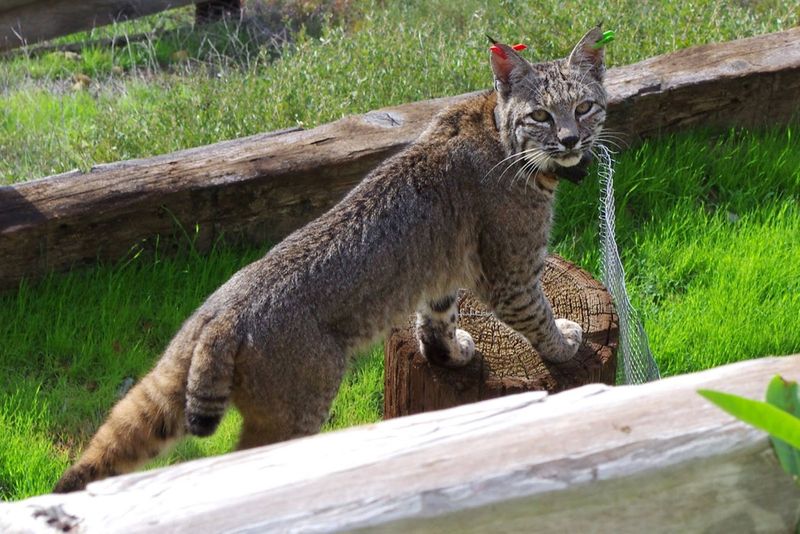
Just outside the bustling city of Los Angeles, there’s a surprising retreat for mountain lions and bobcats. These creatures find refuge in the rugged landscapes and coastal canyons.
Visitors are urged to explore with caution, keeping a respectful distance and ensuring a safe environment for both humans and wildlife. The area’s natural beauty provides a stunning backdrop for those lucky enough to spot these magnificent cats.
6. Colorado – Rocky Mountain National Park
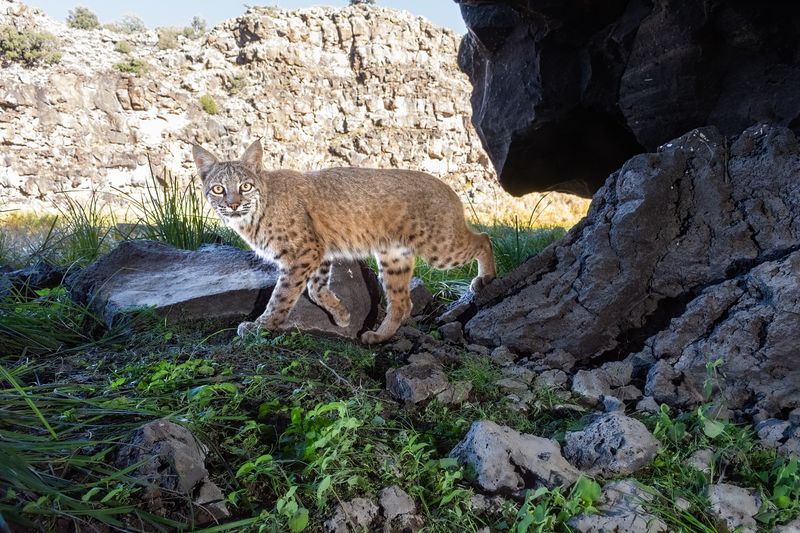
High in the Colorado Rockies, where the air is thin and the views are expansive, mountain lions and bobcats weave through the landscape. Rocky Mountain National Park is a sanctuary where visitors might encounter these majestic cats amidst the towering peaks.
For the keen explorer, trail recommendations include Bear Lake and Glacier Gorge. Remember, maintaining a respectful distance ensures a safer experience for all. The thrill of spotting these creatures in such a wild setting adds a sense of adventure to any visit to this iconic park.
7. Connecticut – Natchaug State Forest
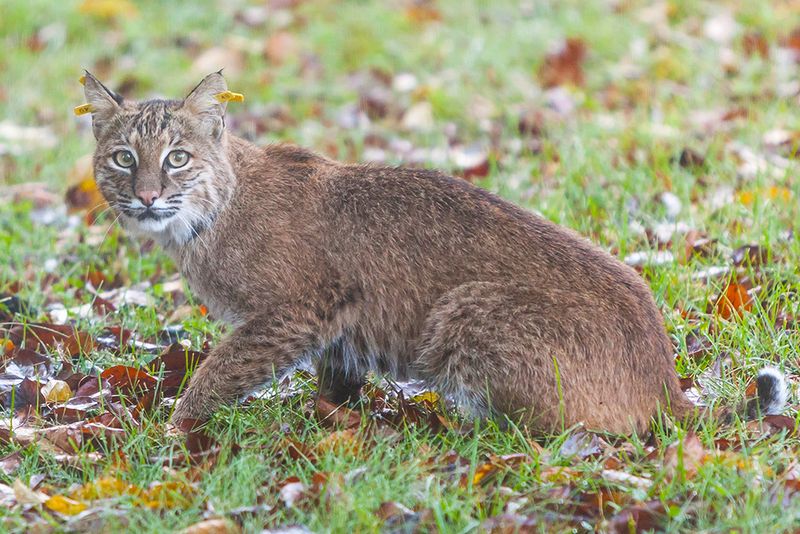
There’s a serene escape where bobcats weave through the trees. The quiet, winding paths of the Natchaug State Forest are perfect for those seeking a peaceful walk in nature.
Travelers are encouraged to tread lightly and keep their eyes peeled for signs of bobcat activity, such as tracks or subtle movements in the underbrush. This forest provides a haven for wildlife enthusiasts eager to capture a glimpse of these secretive creatures in their natural habitat.
8. Delaware – Prime Hook National Wildlife Refuge
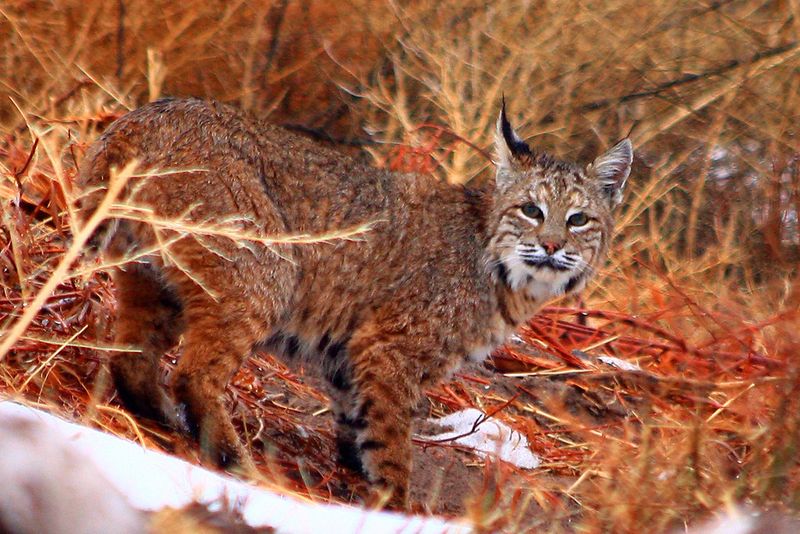
The blend of marshlands and forests supports a diverse range of wildlife. The wetlands of Prime Hook offer a unique opportunity to observe bobcats in their natural environment.
The quiet observer may catch sight of a bobcat during early mornings, when the refuge is most still. It’s a place where patience pays off, and the whispers of nature guide the way. This experience invites visitors to engage with the wild respectfully, embracing the delicate balance of the ecosystem.
9. Florida – Big Cypress National Preserve
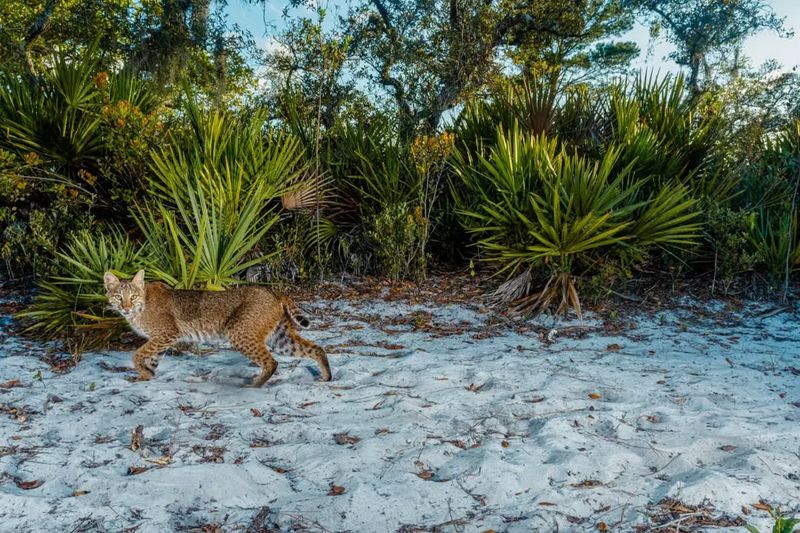
Tucked deep within South Florida’s wild heart lies one of the few places where dense swamps meet still silence and endless sky. Here, every rustle in the brush feels like a secret waiting to be revealed. Big Cypress National Preserve is a rare sanctuary for the Florida panther and bobcats, offering visitors a chance to see these elusive cats in the wild.
Dawn and dusk are prime times for wildlife activity, and quiet, cautious movement can go a long way. Respecting distance and preserving the natural rhythm of this ecosystem is key—because in Big Cypress, you’re stepping into one of the last true strongholds of these majestic predators.
10. Georgia – Okefenokee National Wildlife Refuge
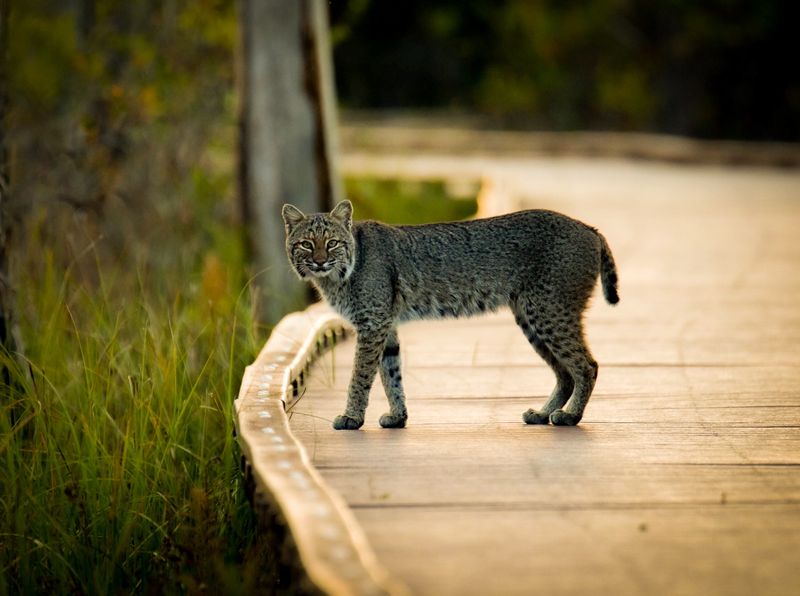
In Georgia’s remote southern wetlands, a maze of dark waters and moss-draped trees sets the stage for quiet encounters with wildlife. Okefenokee National Wildlife Refuge is home to a healthy bobcat population, hidden among the cypress and brush.
While hiking or paddling through the area, visitors might spot tracks, scat, or catch a fleeting glimpse of one darting through the undergrowth. Staying alert and keeping a respectful distance ensures a better chance of observation—and helps protect the delicate balance of this untamed ecosystem.
11. Hawaii – Pana‘ewa Rainforest Zoo
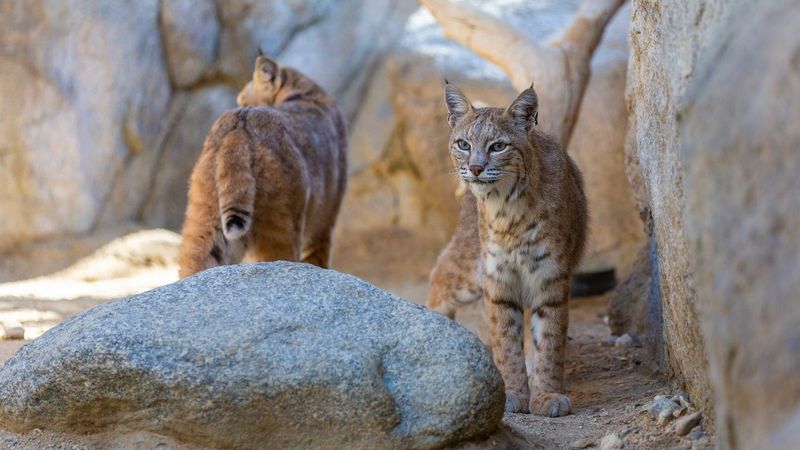
Amid Hawaii’s lush greenery, one destination blends the feel of a tropical rainforest with meaningful wildlife encounters—no hiking boots required. It’s a chance to connect with nature in a more accessible way, especially for those curious about animals not native to the islands.
At Pana‘ewa Rainforest Zoo, visitors can observe a bobcat up close and learn about the species’ role in North American ecosystems. While not a safari in the wild, the experience is both educational and engaging, offering insights into the behavior and conservation of this elusive feline.
12. Idaho – Frank Church—River of No Return Wilderness
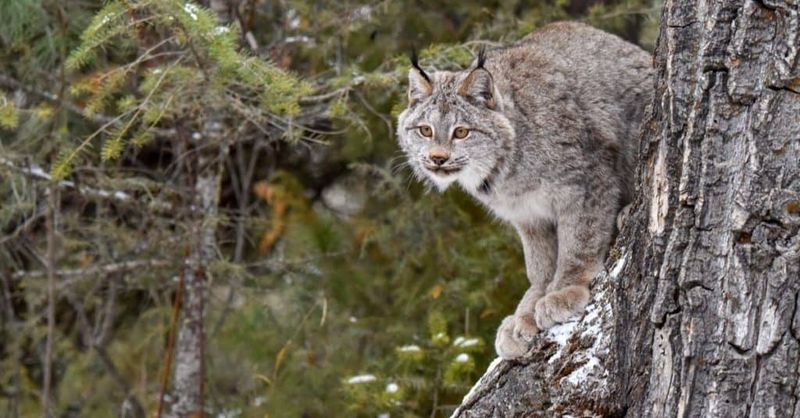
Deep in Idaho’s backcountry, a vast and rugged wilderness stretches beyond the reach of roads and cell service. This is where the Frank Church—River of No Return Wilderness shelters some of the wildest terrain in the Lower 48, and with it, elusive residents like mountain lions, bobcats, and lynx.
Tracking wildlife here isn’t easy—steep trails, remote access points, and unpredictable weather demand serious preparation. But for those who come equipped and move quietly, the rewards are real. Signs of these big cats—prints in the mud, scratch marks on trees, a sudden flicker of movement in the brush—remind you that you’re sharing the land with predators built for survival.
13. Illinois – Shawnee National Forest
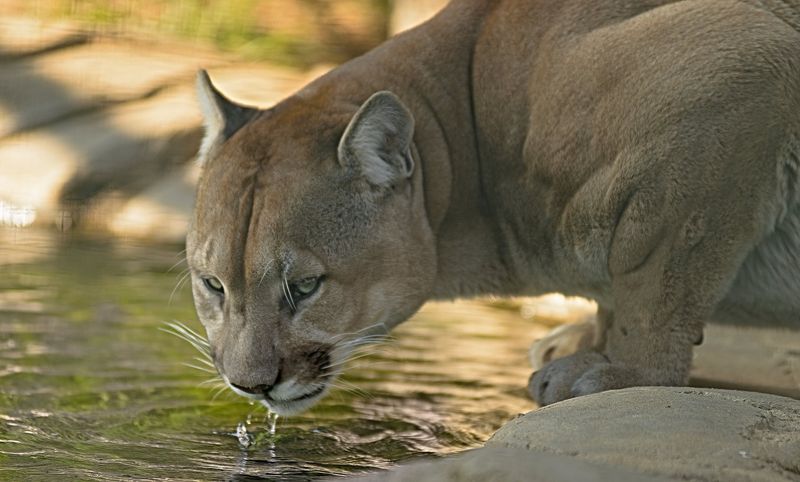
Thick woodlands and weathered bluffs in southern Illinois provide the perfect cover for one of the region’s most elusive predators. Bobcats thrive in this landscape, rarely seen but often nearby.
Shawnee National Forest offers a real chance for those willing to slow down and pay attention. Look for faint paw prints on muddy trails or quick, silent movement through the underbrush. Moving quietly increases your odds. Out here, patience isn’t just helpful—it’s essential.
14. Indiana – Hoosier National Forest
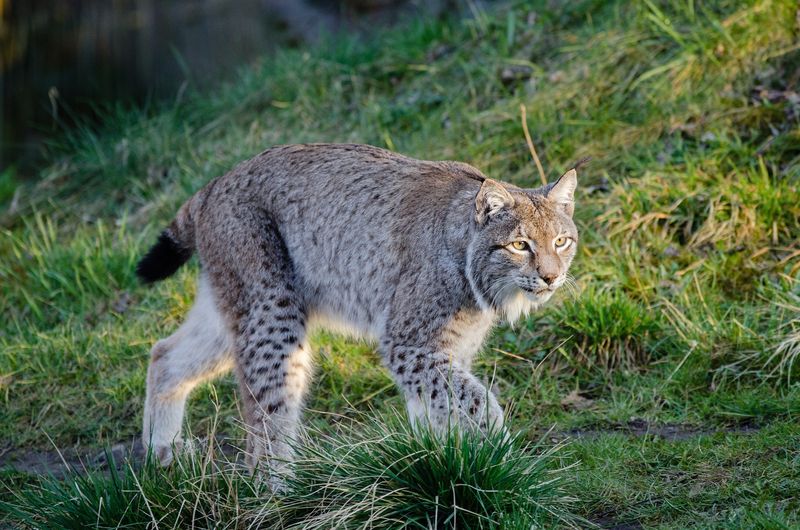
Quiet hills and thick forests stretch across southern Indiana, creating ideal conditions for native wildlife to thrive. Among the trees, bobcats have been making a quiet comeback—rarely seen, but very much present.
Hoosier National Forest is one of the few places in the state where visitors might spot signs of these elusive cats. A patient hike, especially during early morning or late afternoon, can reveal tracks or the faint rustle of movement off-trail. Respect for the land and a slow, steady pace go a long way in this peaceful corner of the Midwest.
15. Iowa – Neal Smith National Wildlife Refuge
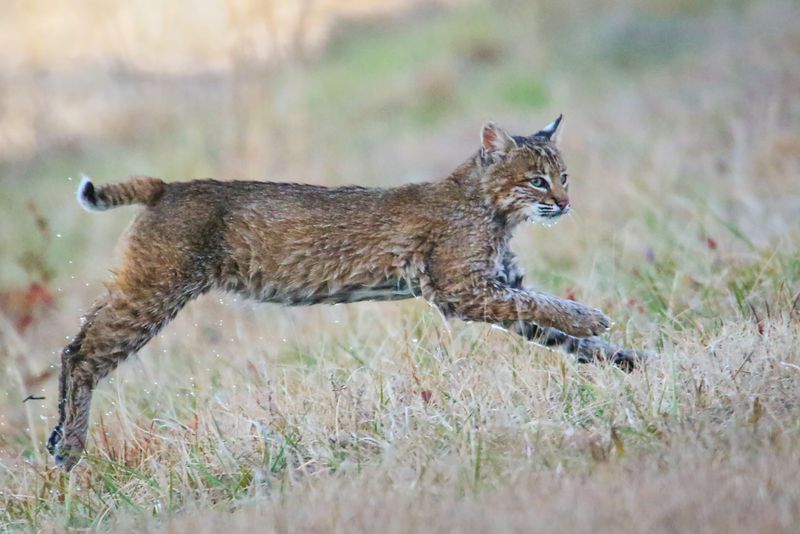
Tallgrass prairies stretch across this part of Iowa, where wide skies and whispering grasses hide more than meets the eye. Neal Smith National Wildlife Refuge provides a rare sanctuary for bobcats in this open, often overlooked habitat.
Thanks to ongoing conservation efforts, the refuge supports a healthy ecosystem where these stealthy predators can thrive. Visitors who move slowly and stay observant might catch a glimpse of a bobcat slipping through the grass. Out here, subtle signs—tracks, movement, silence—tell the real story.
16. Kansas – Tallgrass Prairie National Preserve
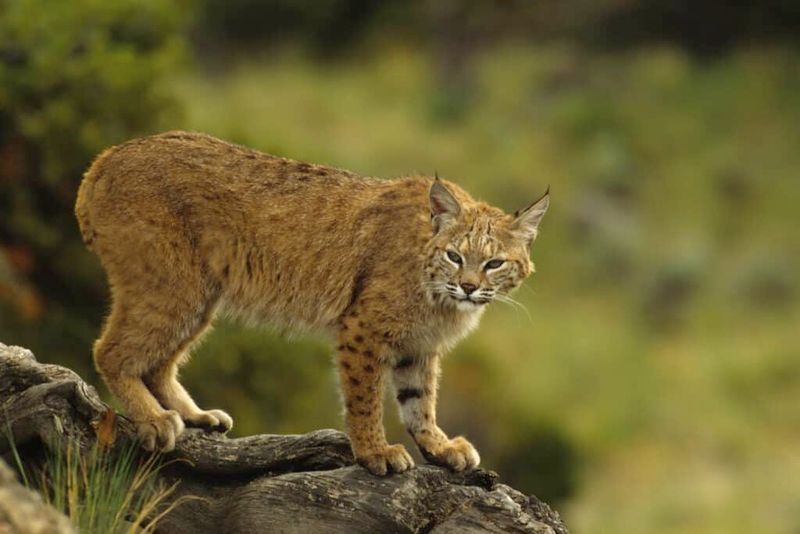
Waves of tallgrass stretch to the horizon, hiding more than just wildflowers and birdsong. Tallgrass Prairie National Preserve is one of the few remaining places where bobcats roam freely across an open Midwestern landscape.
Spotting one takes patience. Visitors should walk quietly, scanning for paw prints, bent grass, or brief movements at the edge of a trail. The silence out here isn’t empty—it’s alive with possibilities for those who know how to listen.
17. Kentucky – Daniel Boone National Forest
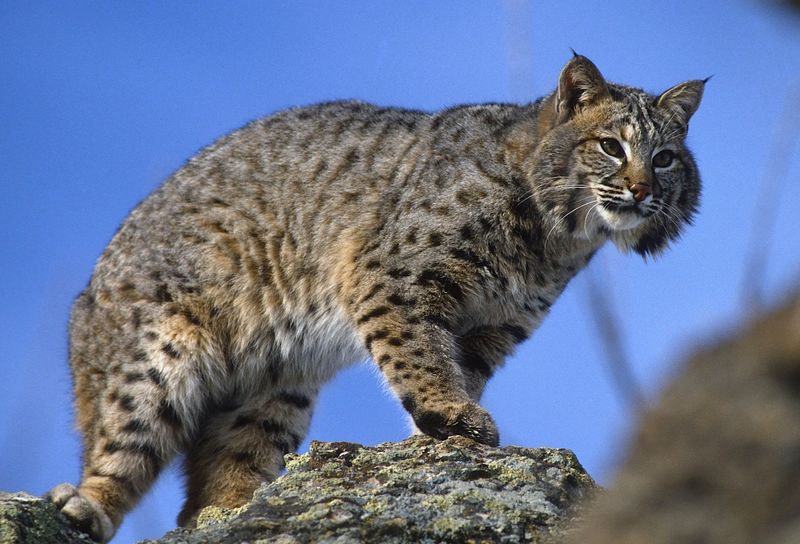
Thick canopies and winding trails define this wild stretch of eastern Kentucky, where nature moves at its own pace. Daniel Boone National Forest provides ideal cover for bobcats, offering them the seclusion they prefer.
Explorers who stick to less-traveled paths and stay alert might notice subtle clues—tracks, scratch marks, or a flicker of movement just out of view. Quiet observation is key. In this kind of setting, blending in and slowing down are your best tools for experiencing the forest on the bobcat’s terms.
18. Louisiana – Kisatchie National Forest
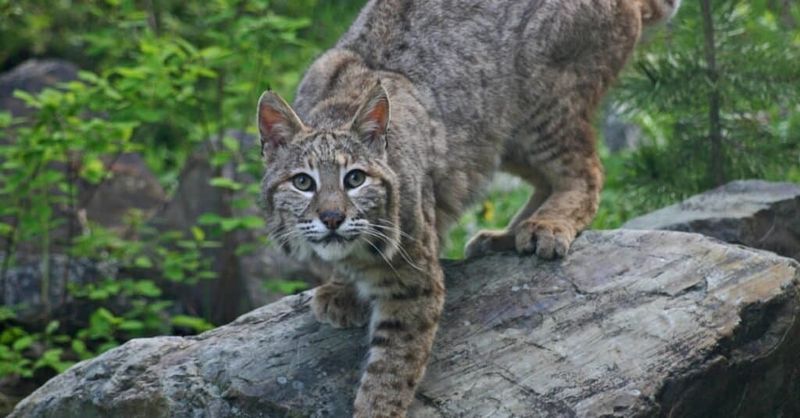
Towering pines and quiet trails shape a rugged landscape where wildlife thrives out of sight. The dense cover and varied terrain make this one of the few places in Louisiana where bobcats still roam freely.
Early mornings and late afternoons are the best times to spot movement in the underbrush. Kisatchie National Forest offers the kind of stillness that rewards patience, where even the faintest sound could signal a nearby cat. Every visit feels like a quiet step deeper into the wild.
19. Maine – Baxter State Park
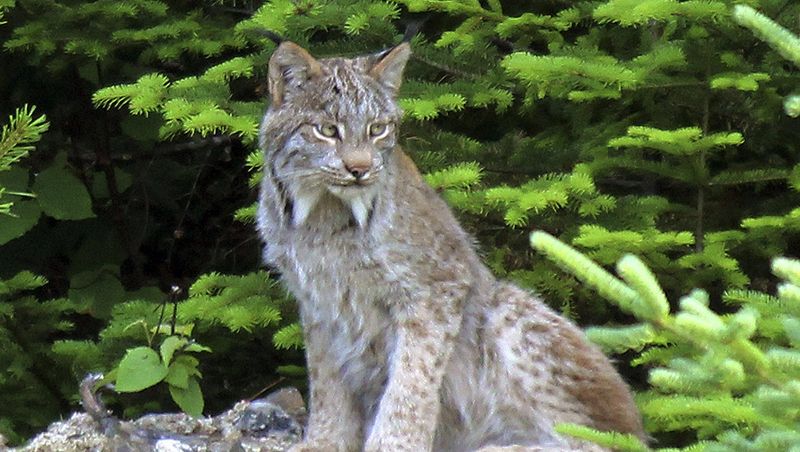
Snow-covered forests and rocky ridges define the northern wilderness, where solitude runs deep and signs of wildlife are etched into the landscape. This is one of the few areas in the region where both lynx and bobcats quietly roam.
Baxter State Park provides a rugged, remote habitat where sightings are rare but unforgettable. Winter brings the best chance, with fresh tracks often marking recent paths. Moving slowly and staying alert is key—this kind of experience rewards those willing to wait and watch.
20. Maryland – Green Ridge State Forest
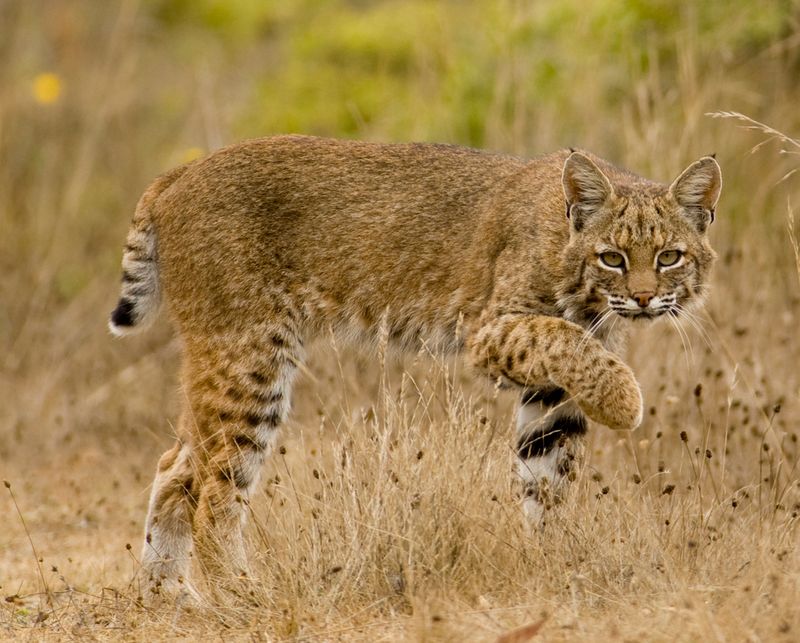
Thick woods and steep ridges define this quiet corner of western Maryland, where wildlife moves unseen through the undergrowth. Bobcats make their home here, slipping between shadows and silence.
Adventurous visitors who tread softly might spot subtle clues—faint tracks, a rustle in the brush, or a flash of movement in the distance. The experience of being in Green Ridge State Forest reminds you that wild beauty still thrives just beyond the beaten path.
21. Massachusetts – October Mountain State Forest
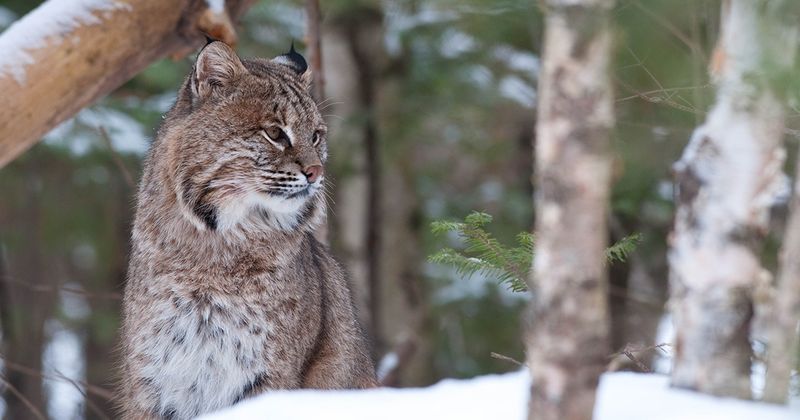
Rolling hills and dense woodlands in the Berkshires create a quiet refuge where wildlife moves unseen. Thick underbrush and remote trails make this one of the best places in the region to look for signs of bobcats.
Moving slowly and staying alert can reveal tracks, scat, or the sudden flick of a tail in the distance. That sense of possibility is what draws many to October Mountain State Forest, where each step brings a chance to witness the quiet pulse of the wild.
22. Michigan – Hiawatha National Forest
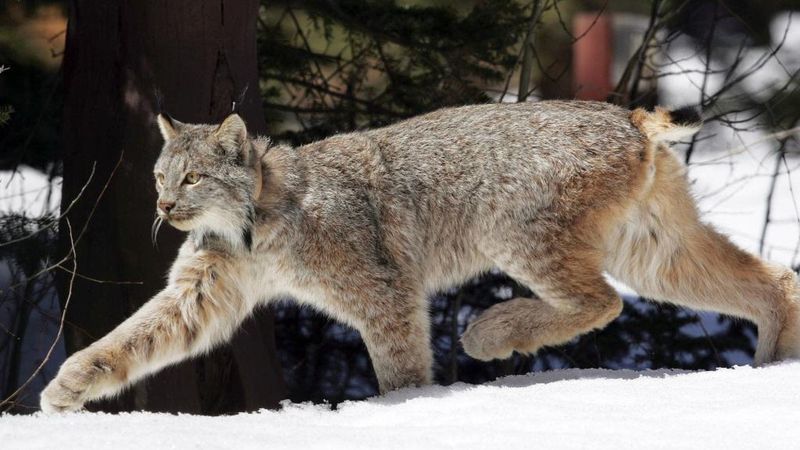
Thick evergreens, winding trails, and deep silence define the northern reaches of Michigan, where wildlife thrives far from human disturbance. The varied terrain and remote feel make this an ideal environment for secretive species.
Those hoping for a glimpse of a lynx or bobcat will find promise along the quieter paths of Hiawatha National Forest, especially in winter when fresh tracks stand out in the snow. Patience and stillness go a long way here, rewarding visitors with fleeting moments that few ever get to witness.
23. Minnesota – Superior National Forest
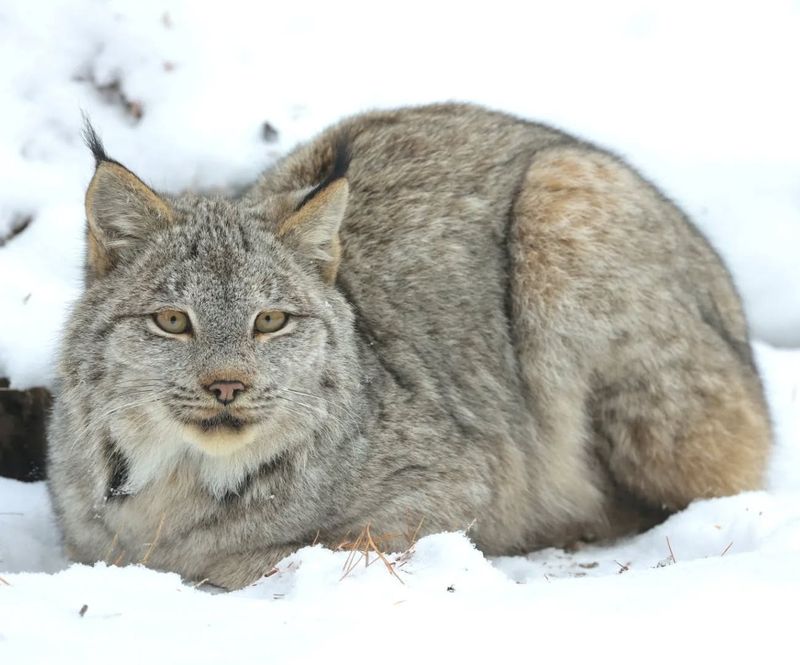
Snow-laden trees and frozen silence define this northern wilderness, where few sounds carry beyond the crunch of boots on the trail. Superior National Forest provides the perfect backdrop for lynx and bobcats to move undetected through the dense cover.
Winter is the prime season for spotting tracks, when fresh snow reveals where these cats have passed. Travelers who move slowly and stay aware might be rewarded with a fleeting glimpse. Respect for the land—and the quiet lives it holds—is essential in a place as untouched as this.
24. Mississippi – De Soto National Forest
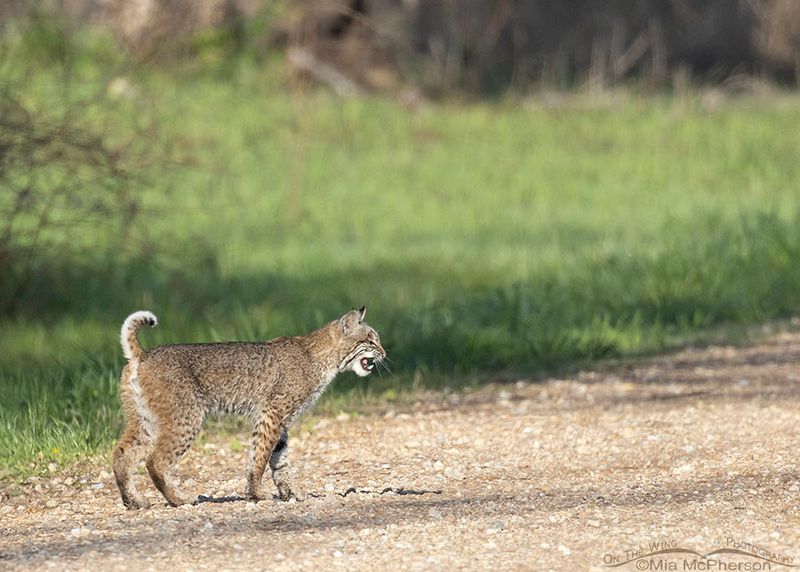
Tall pines stretch overhead and sunlight filters through the undergrowth, creating quiet pathways ideal for spotting wildlife on the move. Early risers have the best chance of seeing activity before the forest fully wakes.
De Soto National Forest provides prime habitat for bobcats, offering them the seclusion they need to thrive. A careful step and sharp eye can reveal signs—tracks, scat, or a flicker of movement just out of view. Encounters here are rare but unforgettable for those who know how to look.
25. Missouri – Mark Twain National Forest
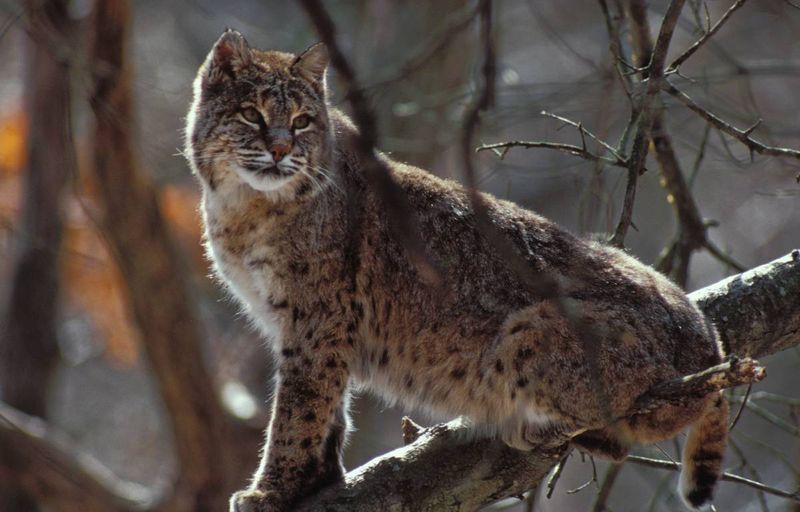
Rolling hills, dense woods, and rocky outcrops shape a landscape where wildlife stays hidden in plain sight. Moving slowly and staying alert can make all the difference for those hoping to spot something rare.
Mark Twain National Forest is one of the few places in Missouri where bobcats still roam freely. Visitors who watch for subtle signs—like fresh tracks or disturbed leaves—may find themselves rewarded with a brief, unforgettable glimpse. Here, every quiet step deepens the sense of connection to the wild.
26. Montana – Glacier National Park
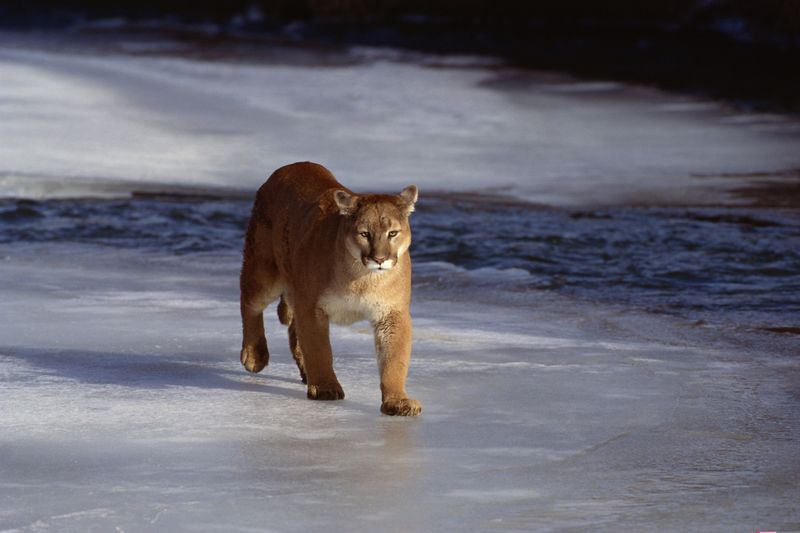
Jagged peaks, alpine meadows, and thick forests form a wild and unpredictable terrain where nature thrives without interruption. Glacier National Park is one of the few places in the U.S. where mountain lions, bobcats, and lynx all coexist in the same rugged habitat.
Travelers should follow backcountry safety guidelines and remain alert, especially in the early morning or evening hours. Spring and fall offer the best chances to spot movement along the treeline or fresh tracks near remote trails. Encounters here are rare—but they leave a lasting impression.
27. Nebraska – Pine Ridge Ranger District
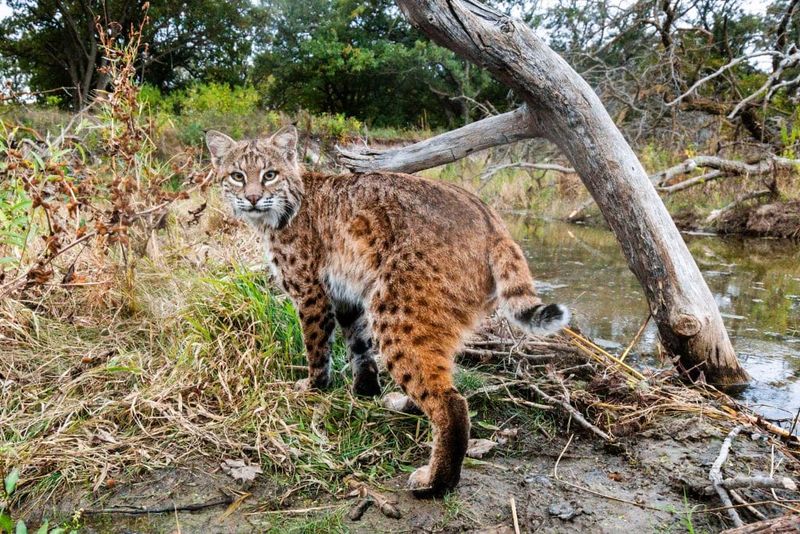
Rolling hills, rocky outcrops, and scattered pines create a rugged pocket of wilderness where wildlife moves quietly through the landscape. Pine Ridge Ranger District in western Nebraska is one of the state’s best places to observe bobcats in their natural environment.
A slow, careful approach—especially around dawn or dusk—can reveal subtle signs like fresh tracks or movement just beyond the trail. Staying patient and aware is key, as these cats prefer to remain unseen. This kind of experience rewards those who know how to listen to the land.
28. Nevada – Spring Mountains National Recreation Area
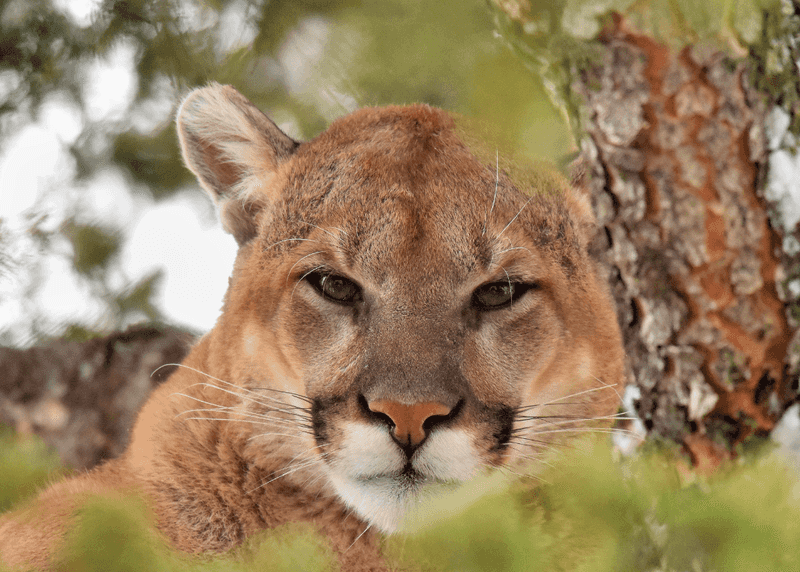
High above the desert floor, cool air and dense forests offer a striking contrast to the nearby cityscape. Spring Mountains National Recreation Area is a surprising habitat for mountain lions and bobcats, making it one of the best spots in southern Nevada for big cat sightings.
Hikers who move quietly and stay alert may notice tracks, scat, or movement along ridgelines and shaded paths. Respectful distance and awareness are essential, especially in this delicate desert-meets-alpine ecosystem. Just beyond the glow of Las Vegas, the wild still thrives.
29. New Hampshire – White Mountain National Forest
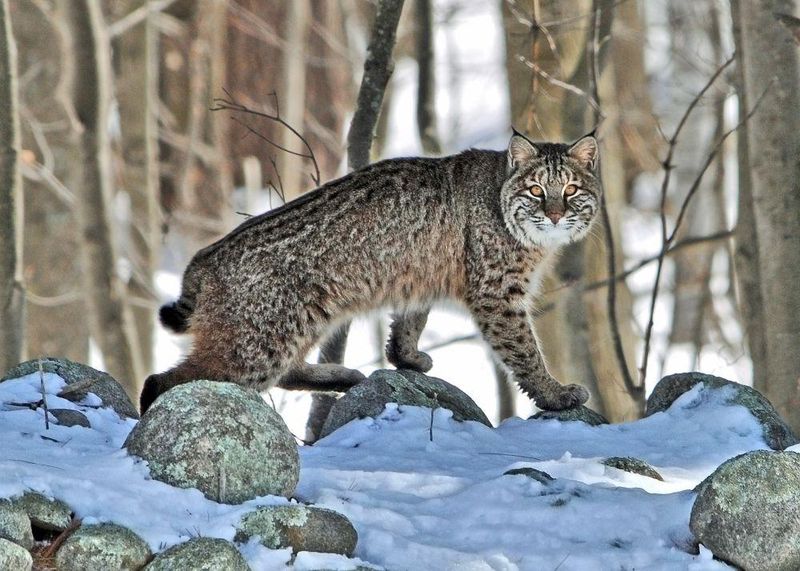
Snow-dusted peaks and dense woodlands create a quiet refuge where wildlife often goes unnoticed. Steep slopes and thick cover give these shy predators exactly what they need to thrive.
Tracking is easiest in winter, when prints and patterns stand out against the snow. White Mountain National Forest rewards patient explorers with subtle signs—faint tracks, a flick of movement, or the hush that follows a sudden stillness. Every step brings you deeper into their hidden world.
30. New Jersey – Stokes State Forest
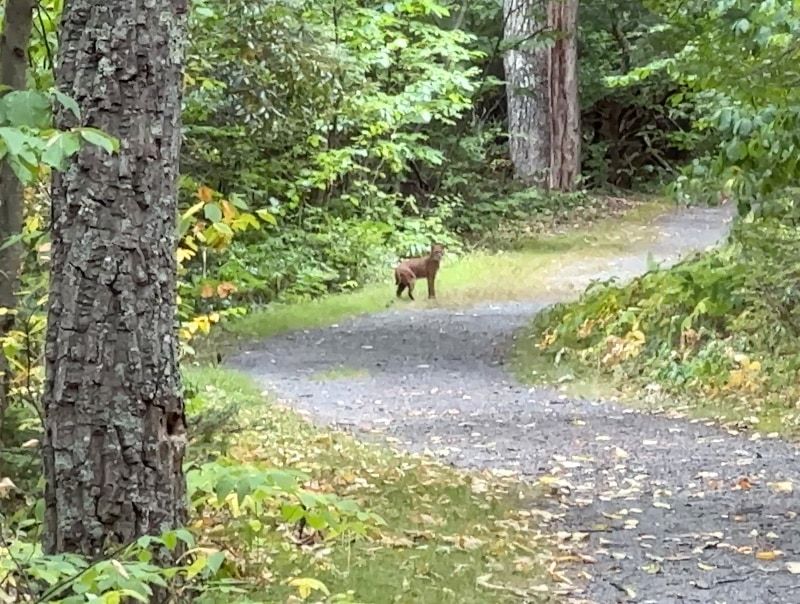
Winding paths and thick canopy make this stretch of northern New Jersey feel far removed from the world just beyond its borders. The dense woods offer the kind of quiet cover that bobcats prefer, making it one of the few places in the state where they still roam freely.
A slow, mindful pace is key—watch for subtle clues like paw prints on soft ground or sudden movement in the brush. Stokes State Forest invites visitors to tune into the rhythm of the wild, where the smallest sound might be something worth stopping for.
31. New Mexico – Gila Wilderness
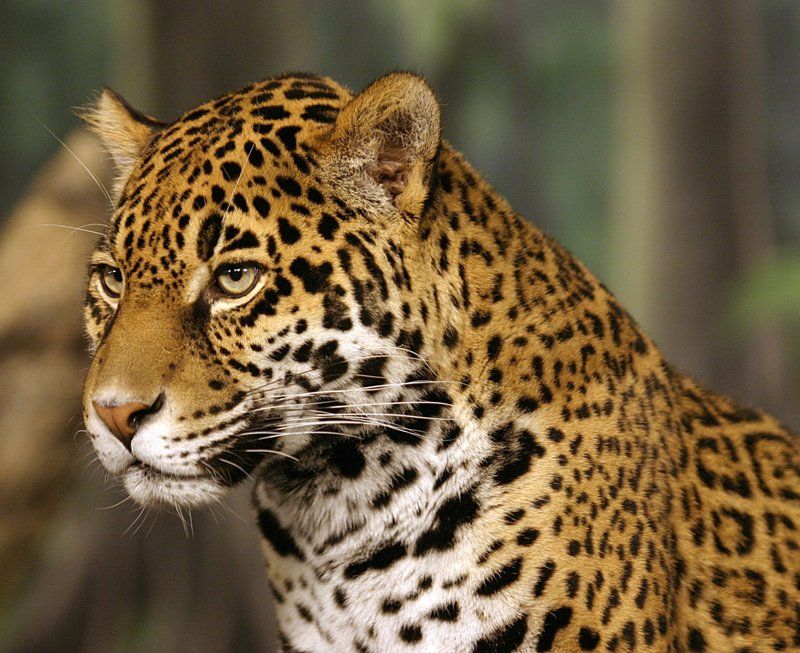
Remote trails, rugged mountains, and dense forests define this vast landscape, far removed from modern distractions. Mountain lions, bobcats, and even the rare jaguar move through this terrain with ease, often unseen but always present.
Explorers should come prepared—navigation skills, patience, and a deep respect for solitude are essential. Each encounter in Gila Wilderness feels like stepping into a wilder, older world—one where nature still sets the rules.
32. New York – Adirondack Park
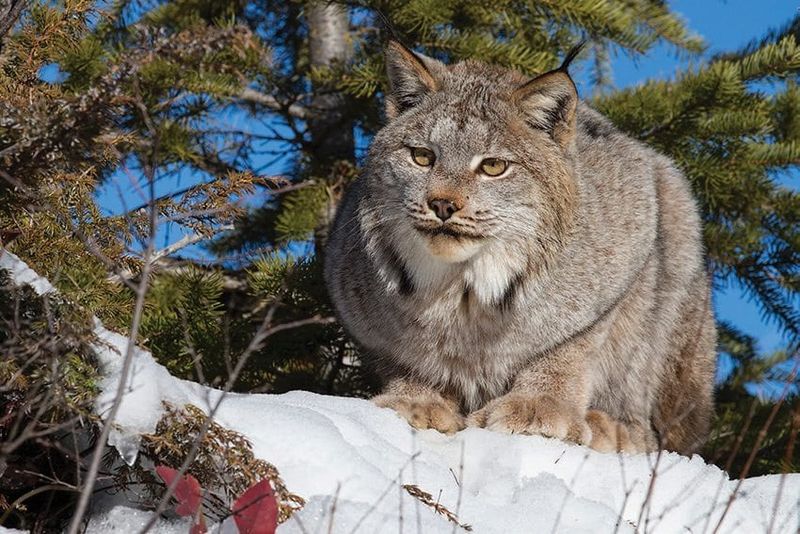
Vast forests, quiet lakes, and winding trails stretch across upstate terrain that feels truly untamed. This region supports both bobcats and, on rare occasions, lynx—hidden among the thickets and rocky ridges.
Stepping off the beaten path with patience and a sharp eye can reveal subtle signs of wildlife nearby. Adirondack Park offers the kind of stillness that rewards quiet observation, where every rustle or track might lead to something unforgettable.
33. North Carolina – Great Smoky Mountains National Park
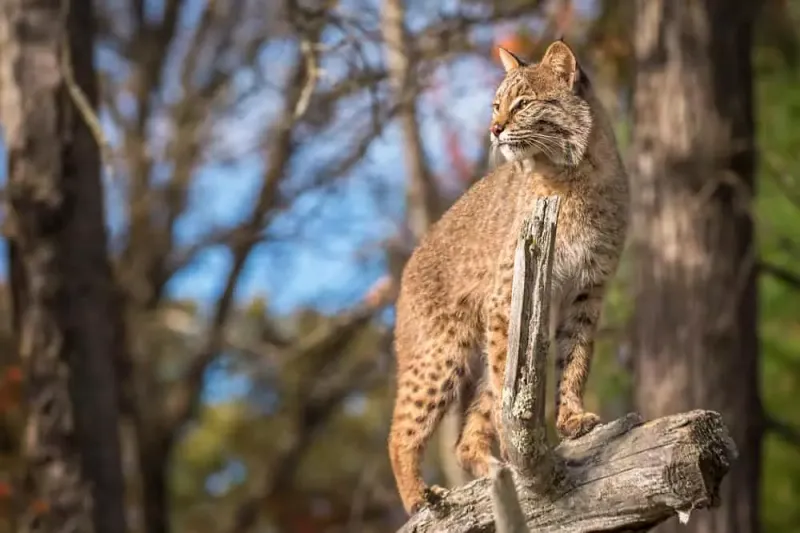
Thick forests, rolling ridges, and shifting mountain fog set the stage for quiet moments with nature. These wooded paths are home to secretive wildlife that often stays just out of sight—if you’re not looking closely, you might miss them entirely.
With patience and careful steps, hikers may spot signs of bobcat activity—tracks in the mud, a rustle in the brush, or claw marks on trees. Great Smoky Mountains National Park (on the North Carolina side) rewards those who move slowly and stay curious, offering rare glimpses into its wilder side.
34. North Dakota – Little Missouri National Grassland
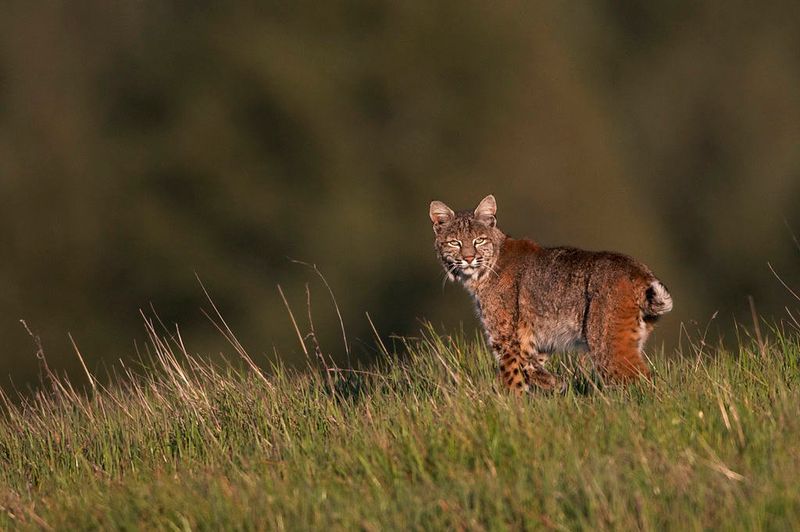
Rolling buttes, wide skies, and open prairie define this remote stretch of western North Dakota—far from city lights and busy trails. Here, patience and a sharp eye can go a long way in spotting shy wildlife such as bobcats.
Subtle signs like paw prints or parted grass often go unnoticed, but in Little Missouri National Grassland, those details matter. A quiet hike through this vast terrain offers more than just scenery—it’s a rare chance to connect with the wild on its own terms.
35. Ohio – Wayne National Forest
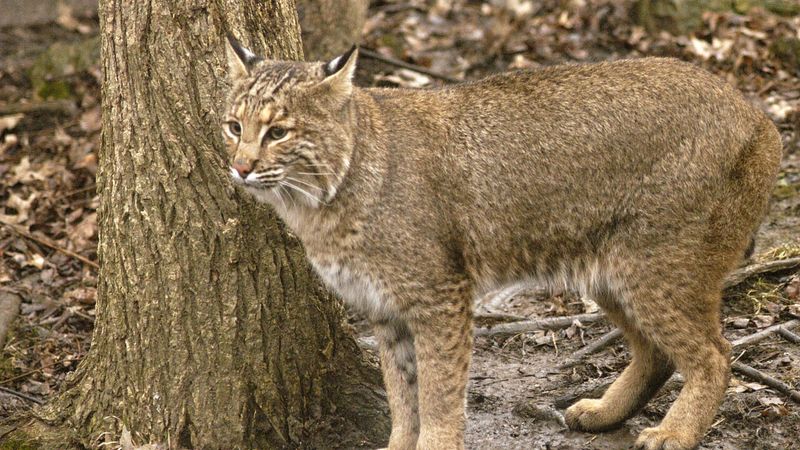
Shaded trails wind through thick hardwoods, where the sounds of the forest often give more away than your eyes can catch. This part of southeastern Ohio has quietly become one of the state’s best habitats for bobcats.
Careful hikers who move slowly and scan the forest floor may spot tracks or catch a flicker of movement in the brush. Wayne National Forest offers the kind of calm, undisturbed space where wildlife thrives—and where those who tread lightly might just be rewarded with a rare glimpse.
36. Oklahoma – Wichita Mountains Wildlife Refuge
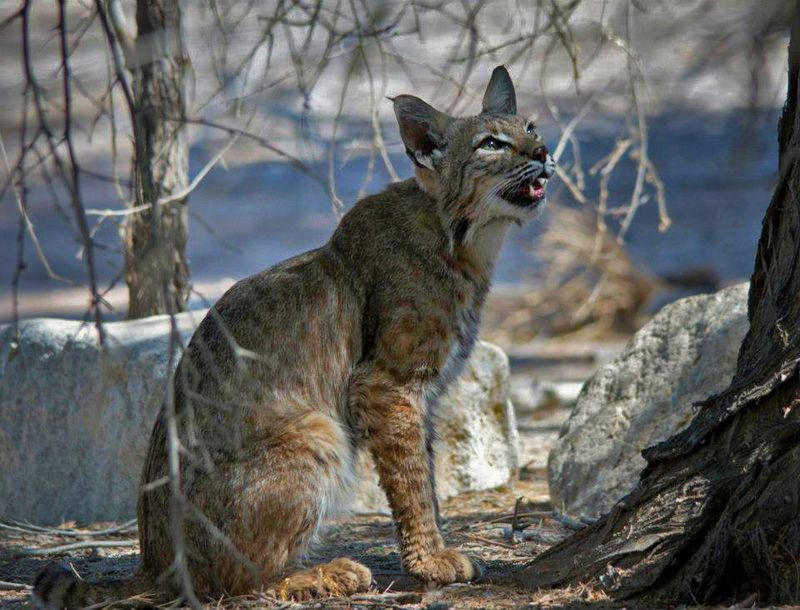
Rocky outcrops, open meadows, and dense brush create an environment where wildlife slips easily out of view. This rugged landscape is one of the few places in Oklahoma where bobcats still roam with freedom.
Those who hike slowly and stay alert may notice tracks along dusty paths or movement through the grasses. Wichita Mountains Wildlife Refuge gives visitors a are window into the natural rhythms of this untamed corner of the state—where quiet observation can turn into unforgettable moments
37. Oregon – Crater Lake National Park
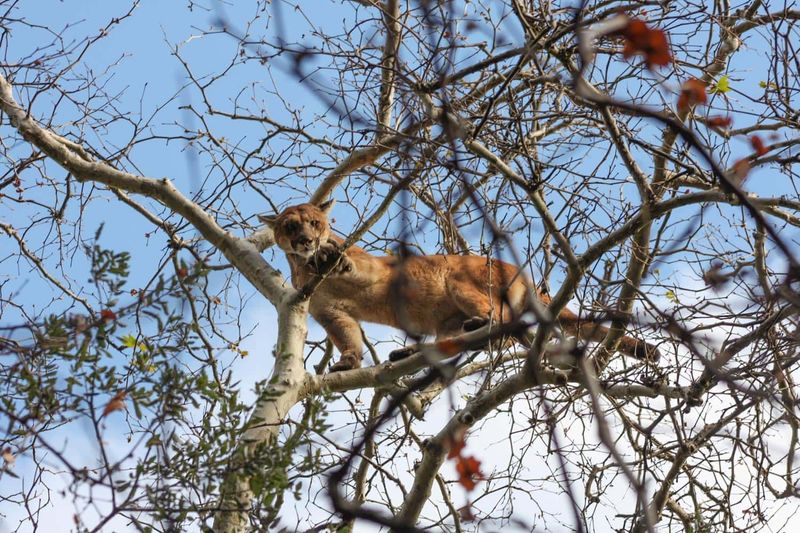
Steep cliffs, dense forests, and remote high-country terrain provide far more than scenic views—they shelter some of the region’s most elusive predators. Sightings are rare, but signs of their presence linger for those who know where to look.
Quiet trails, especially in less-traveled areas of Crater Lake National Park, offer the best chances to spot mountain lions or bobcats. Moving slowly and paying attention to subtle details—tracks, markings, or distant movement—can lead to rare and rewarding encounters.
38. Pennsylvania – Allegheny National Forest
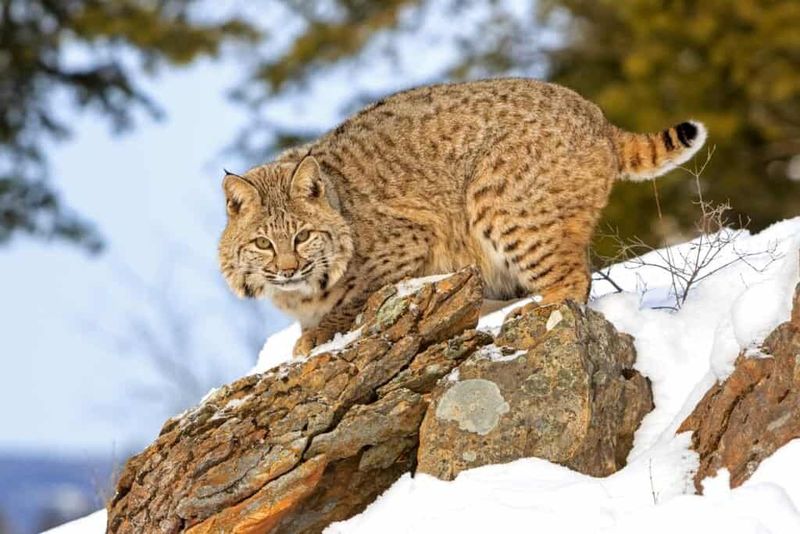
Towering trees and shadowed hollows define this stretch of northern Pennsylvania, where quiet trails wind through some of the state’s most untouched woodlands. The dense cover and rich biodiversity create just the kind of seclusion bobcats prefer.
Hikers who move slowly and stay observant might spot prints in the mud or catch a flash of movement between trees. Allegheny National Forest offers more than scenery—it invites visitors to connect with the wild in a way that’s subtle, patient, and deeply rewarding.
39. Rhode Island – Arcadia Management Area
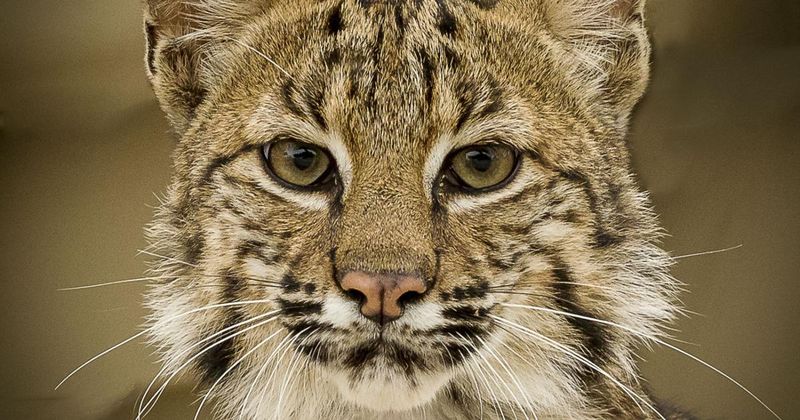
Wooded trails and hidden clearings make this part of Rhode Island feel far more remote than it is. Arcadia Management Area provides the kind of habitat that bobcats need—thick cover, quiet surroundings, and minimal disturbance.
Those who move carefully and stay alert might notice faint tracks or catch a glimpse of movement along the forest edge. Every step through this landscape invites a deeper connection with the wild side of New England.
40. South Carolina – Francis Marion National Forest
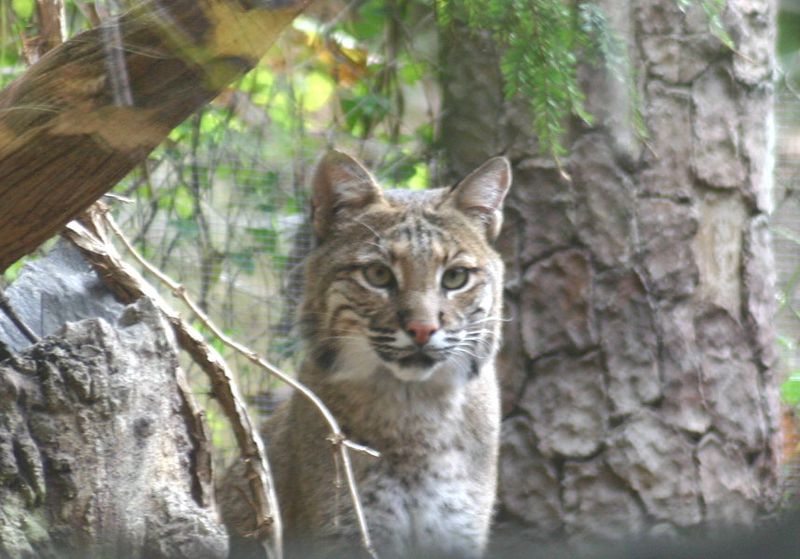
Thick pine stands and winding dirt trails define this lowcountry landscape, where the quiet rustle of leaves might be the only clue that something wild is nearby. These woods offer exactly the kind of cover bobcats need to thrive.
Those who explore with care—especially at dawn or dusk—may spot tracks or hear movement just beyond view. Francis Marion National Forest gives visitors a chance to step into a space where wildlife still moves freely and the pace of nature sets the rhythm.
41. South Dakota – Black Hills National Forest
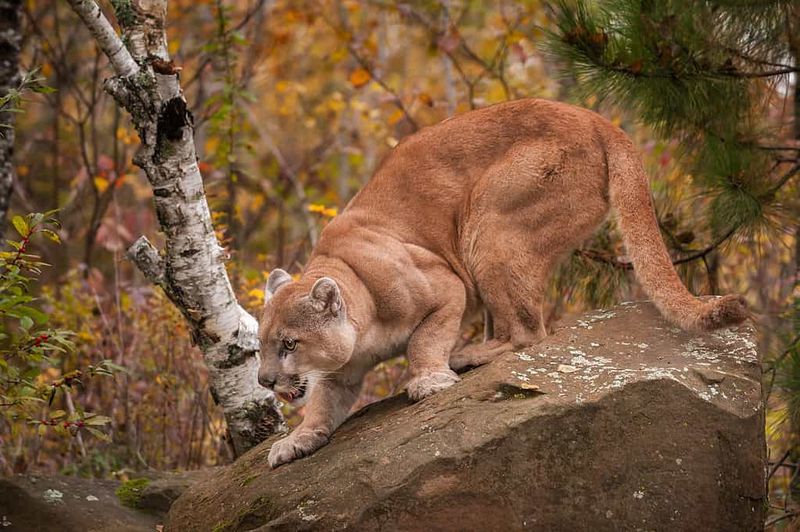
Jagged ridges, thick forests, and winding canyons make this region one of the wildest in the state. Mountain lions and bobcats silently navigate the terrain, rarely seen but often nearby.
Those venturing into Black Hills National Forest should move with quiet attention, especially around dawn or dusk when wildlife is most active. With a bit of luck and a lot of patience, the forest may just reveal one of its most elusive inhabitants.
42. Tennessee – Cherokee National Forest
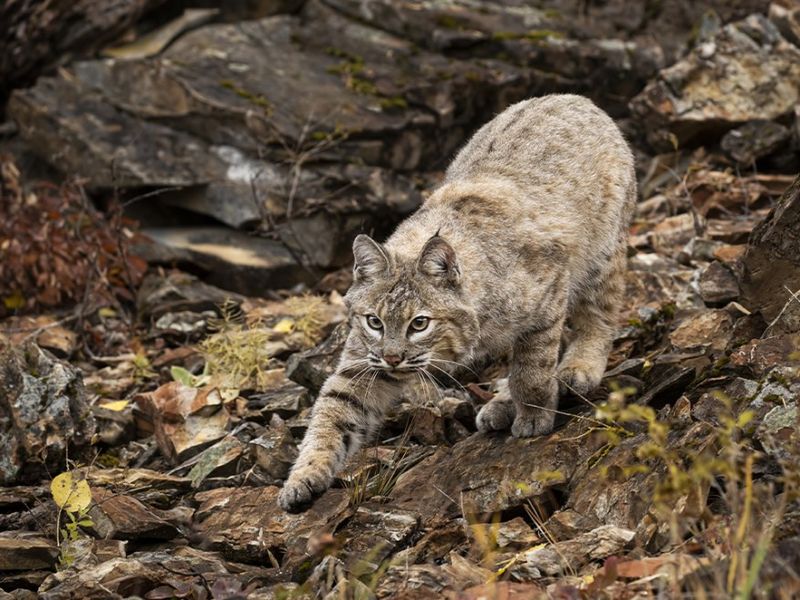
Misty ridges and hardwood forests stretch across the hills, creating a peaceful space where wildlife can roam undisturbed. Cherokee National Forest provides the dense cover and quiet terrain that bobcats prefer.
Moving slowly and watching for subtle signs—like fresh tracks or a rustle in the brush—can increase the chances of a sighting. In this serene setting, every step offers a chance to witness nature on its own terms.
43. Texas – Big Bend National Park
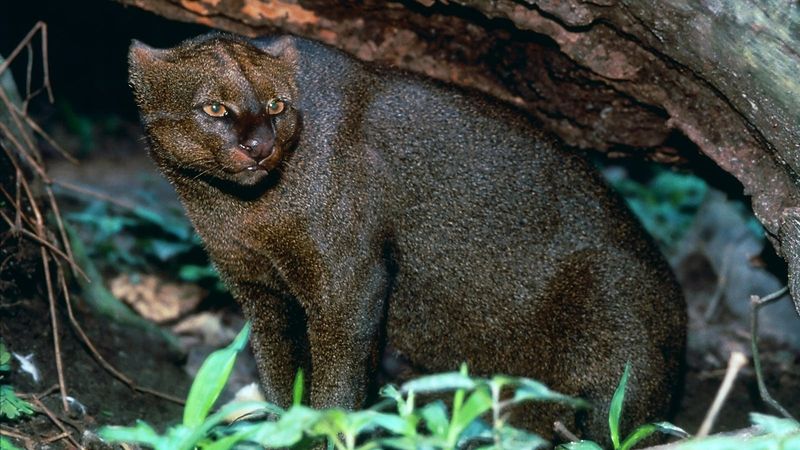
Towering cliffs, winding canyons, and quiet desert flats make this far-flung corner of West Texas feel worlds away from the ordinary. Big Bend National Park is one of the few places in the U.S. where mountain lions, bobcats, and even the rare jaguarundi roam free.
Those exploring at dawn or dusk may spot tracks or movement near water sources and remote trails. Respecting distance and moving quietly offers the best chance of encountering the wild on its own terms.
44. Utah – Zion National Park
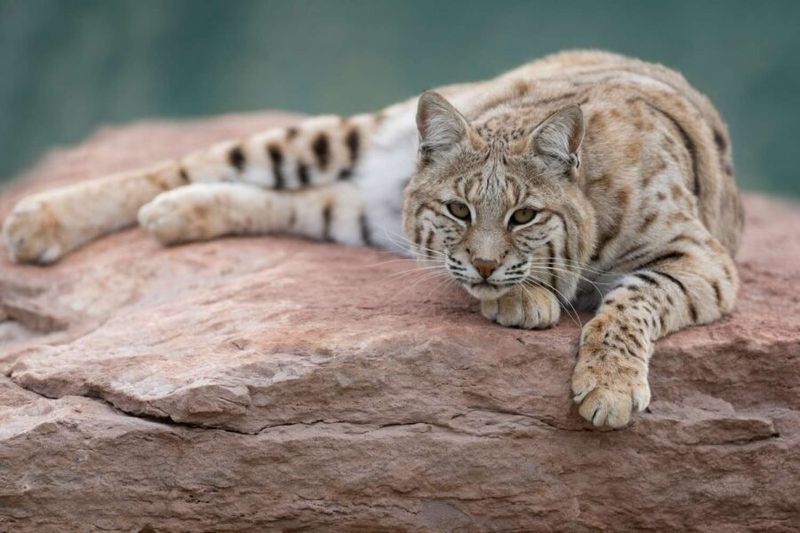
Sheer sandstone walls and deep canyons carve through this iconic stretch of southern Utah, creating a mix of shelter and seclusion that’s perfect for predators. Zion National Park is home to both mountain lions and bobcats, though sightings are rare and always fleeting.
Early morning or late evening hikes offer the best chances to spot fresh tracks or catch a glimpse along a ridgeline. Moving quietly and staying aware turns every trail into a chance for discovery in this dramatic, wild setting.
45. Vermont – Green Mountain National Forest
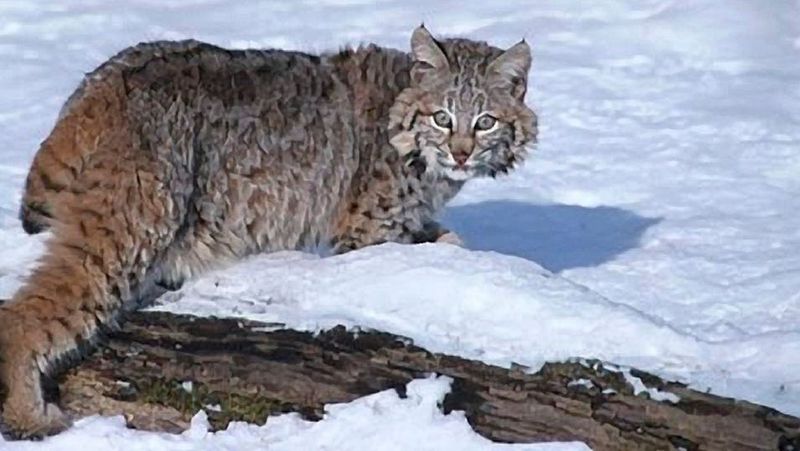
Mossy paths, quiet streams, and dense woods make this part of New England feel wonderfully remote. The thick forest canopy and mix of elevation create just the kind of environment bobcats need to stay hidden and thrive.
Those hoping to spot one should move slowly and scan for subtle signs—tracks in soft soil, scat near trail edges, or movement in the undergrowth. Green Mountain National Forest invites patient hikers into a world where nature reveals itself on its own quiet terms.
46. Virginia – George Washington And Jefferson National Forests
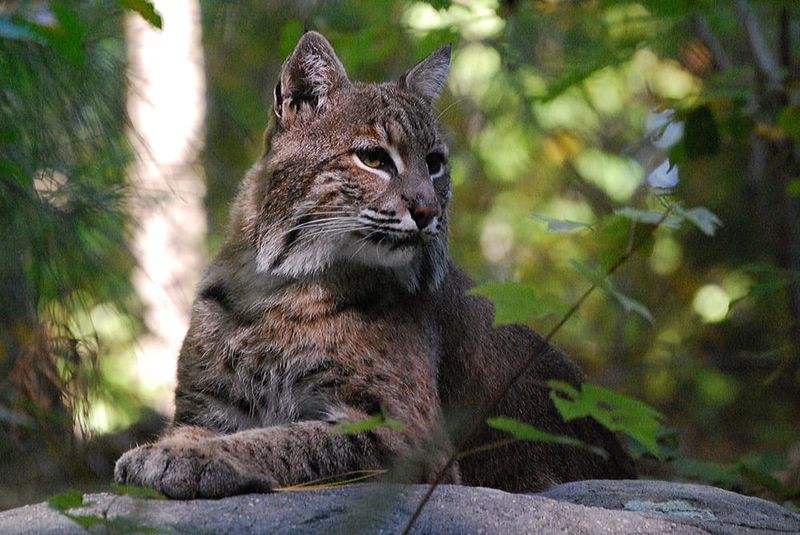
Winding trails cut through dense woods and rolling ridges, offering long stretches of solitude and rich habitat for wildlife. These quiet corners are where bobcats move unseen, leaving only faint traces behind.
Early mornings or dusk hikes provide the best chances to spot signs of activity—tracks, scratch marks, or the brief flick of movement through brush. George Washington and Jefferson National Forests give visitors a rare window into the lives of these elusive cats, rewarding those who explore with patience and care.
47. Washington – North Cascades National Park
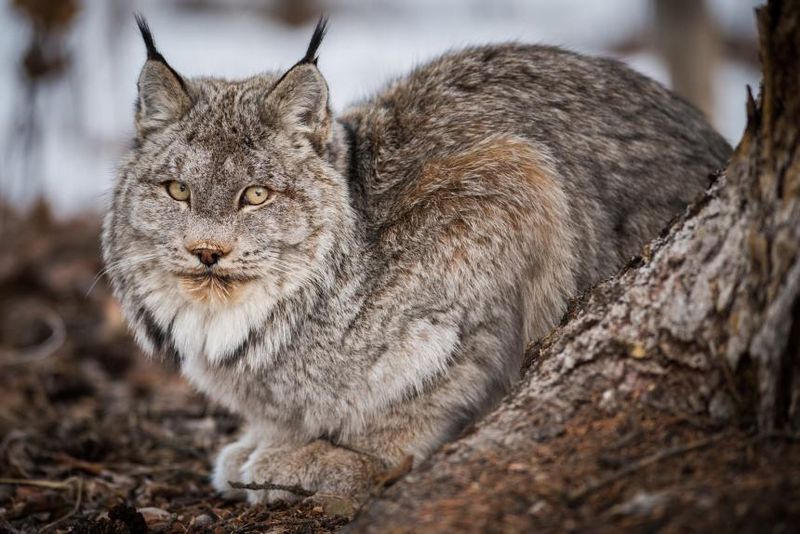
In the rugged landscapes of Washington, elusive wildlife moves quietly through thick forests and jagged peaks. This corner of the state remains one of the wildest in the country, where patience and stillness often lead to the most rewarding encounters.
North Cascades National Park is a true sanctuary for mountain lions, bobcats, and lynx, thanks to its remote terrain and rich biodiversity. Visitors who explore with care—especially along lesser-traveled trails—may notice subtle signs of activity like tracks or movement just out of view.
48. West Virginia – Monongahela National Forest
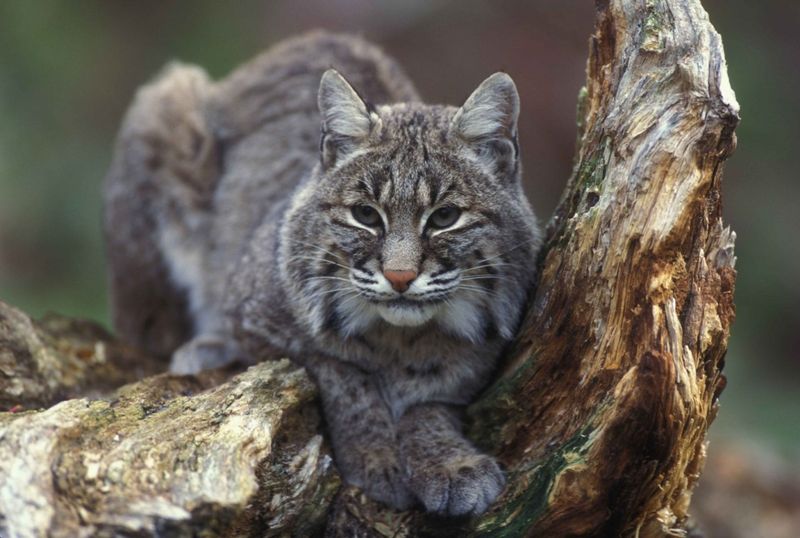
Thick forests and misty ridgelines stretch across this wild corner of Appalachia, creating a quiet, undisturbed environment where wildlife still thrives. Bobcats roam here, often unseen but not far from view.
Moving slowly and watching for subtle signs—tracks in soft soil or a flicker of movement in the brush—can lead to memorable moments. Monongahela National Forest rewards patient explorers with glimpses into a world that often stays hidden, just beneath the surface.
49. Wisconsin – Chequamegon-Nicolet National Forest
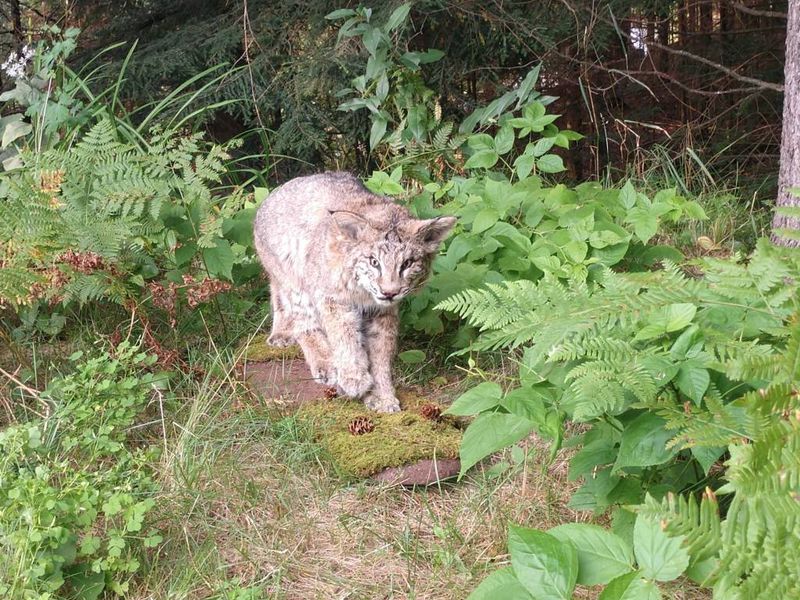
Snow-draped trees and quiet, winding trails define this remote stretch of northern Wisconsin, where wildlife moves silently through the forest. The deep woods provide perfect cover for some of the region’s most elusive predators.
Chequamegon-Nicolet National Forest is home to both lynx and bobcats, and winter is the best time to spot their tracks pressed into fresh snow. Those who move slowly and stay alert might catch signs of their presence along the trail. In this still and frosty setting, every step brings you closer to the wild.
50. Wyoming – Yellowstone National Park
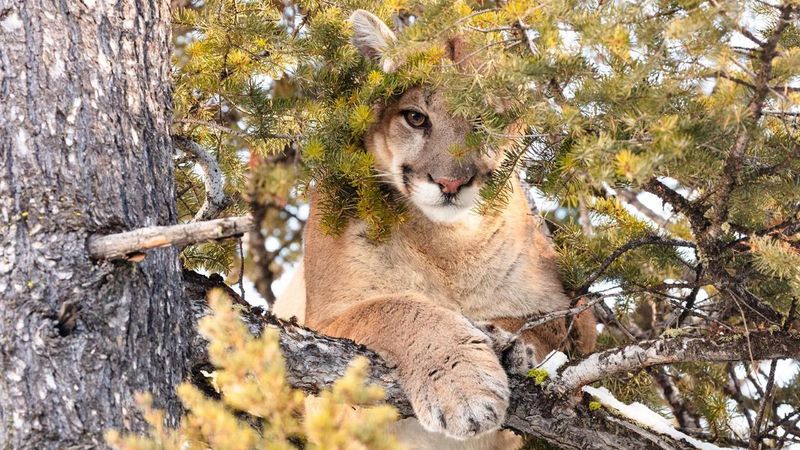
Towering peaks, vast meadows, and geothermal wonders create a landscape unlike anywhere else—one where wildlife still rules the land. Predators move quietly through this terrain, leaving behind only subtle clues for those who know where to look.
Yellowstone National Park is home to mountain lions, bobcats, and the elusive lynx, all of which find sanctuary in its remote corners. Visitors who tread softly and pay attention to tracks, scat, or distant movement may be rewarded with a rare glimpse.
